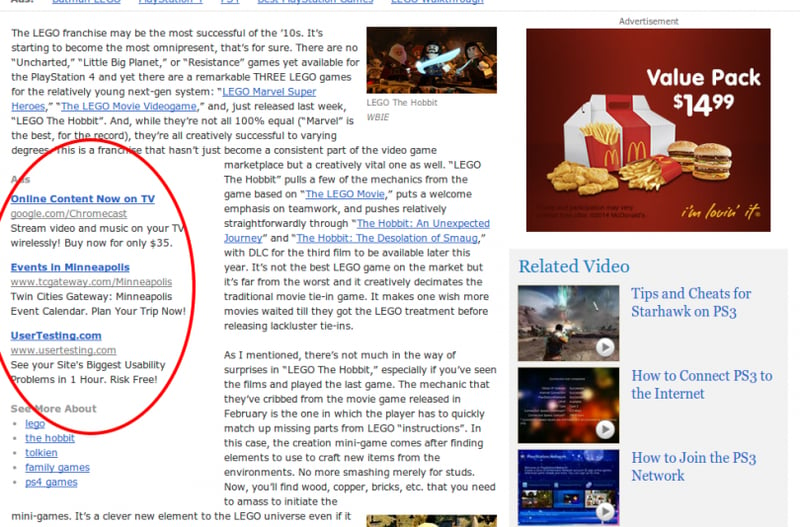Google Adsense is retiring its Adsense link ads as of March 10, 2021. What does this mean for vendors who relied upon them — and what will be used moving forward? Before Google's Adsense link ads go away for good, you might want to know more about why they're leaving and what you can do without them.
What Are Google Adsense Link Ads?
Google Adsense link ad units were ads that offered multiple text links closely related to the content on the web page the ad appeared on. Often these links were for products or services closely aligned with the page content.
These links could either be displayed as a fixed element or they could be displayed as a responsive element. Responsive elements would react to screen size, making these Google adsense links feasible for platforms such as desktop computers, laptops, and mobile devices such as phones and tablets.

In addition to Google Adsense links, there is a multitude of different ad formats that Google offers, including display ads, in-feed ads, in-article ads, and matched content ads. Google Adsense is a robust platform that comes with many options, especially for those who have in-depth information about their customers and their audience.
Why Are Adsense Ad Link Units Going Away?
Google is attempting to "modernize" its formats, which very likely means that Link Ads simply weren't effective. In the modern era, the text link ad units just seem to blend into the background. Critics described them as "ineffective at best and annoying at worst". Users were "tuning them out," and Google's experiments suggest that Display Ads of a similar size and in a similar placement will perform just as well if not better.
What Happens When Adsense Link Ads Are Discontinued?
On March 10, 2021, the link ads will no longer work and you will no longer be able to create link ad units. Responsive link ads will be replaced with display ads, and "[previously link ad unit]" will be added to the end of the ad name. Fixed-size link ads will no longer be served. Publishers should remove any fixed-size link ad units on their site and replace them with other formats, such as auto ads, native ads, or display ads.
If an ad cannot be displayed in a place where an ad existed, it will show as white or blank. So, those who currently have responsive link ads on their site may not need to make any changes; it's possible they will be seamlessly changed to a display ad. But those who are using fixed-size link ads will need to go through their site to make the changes.
Changes like this to Google Adsense are expected. Link ads are no longer effective for Google, so they are updating the format. It's a hands-off transition; many people may not need to change their site at all or may just need to change small areas.
Many of those who currently have Adsense link ads may actually see their revenue going up once they make the switch because Google has run experiments and feel display ads will perform as well or better.
Either way, it's a good time for businesses to take a critical look at their websites and the overall advertising experience and ROI. A/B testing can help an organization in determining what types of ads are working best for them.
Additionally, it's a good time for publishers to measure the impact of people using adblockers on their site, which can reduce ad revenues by 30% on average.
Admiral's Adblock Recovery solution provides a free dashboard for publishers to size their losses and anti-adblock tools to recover revenue losses. In some cases, Admiral customers have returned greater than 100% of the losses they were seeing from adblockers, via the extended options available in Admiral VRM.
Start recovering revenue with a single tag you can install in 5 minutes. Contact Admiral for a quick demo of Admiral's Adblock Recovery solution. Increase your website revenue this week.





